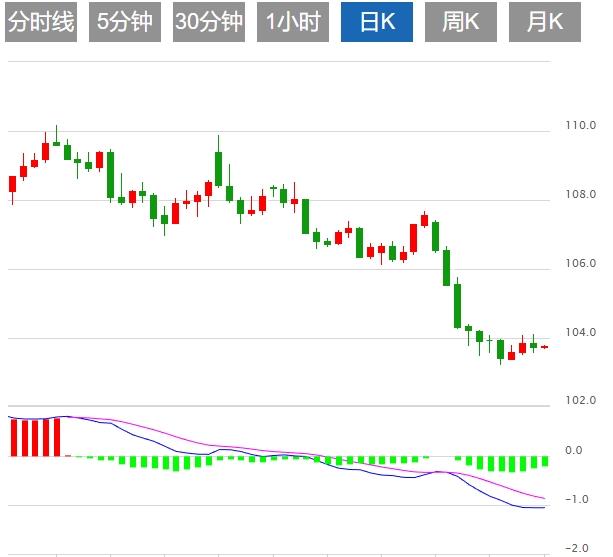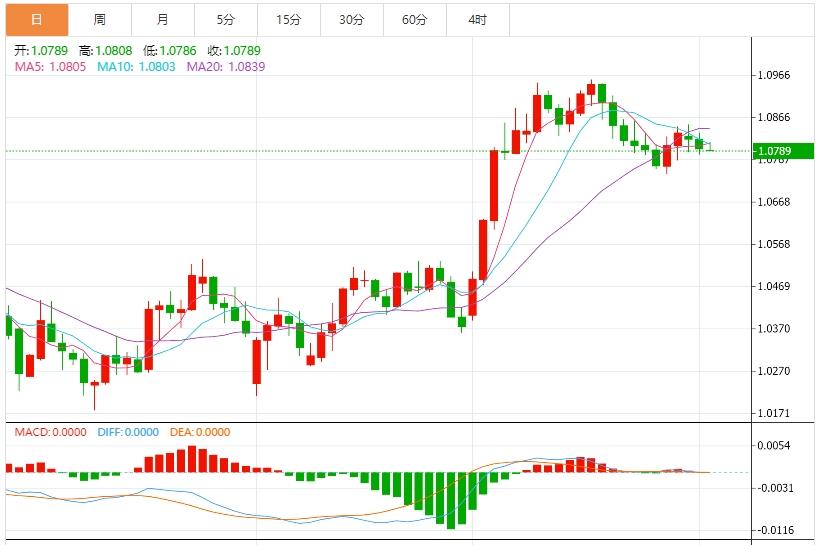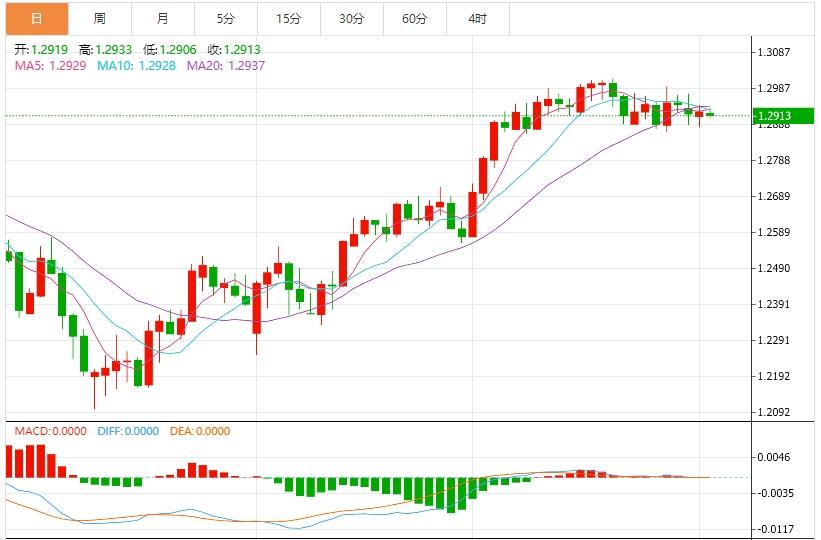Wonderful introduction:
The moon has phases, people have joys and sorrows, whether life has changes, the year has four seasons, after the long night, you can see dawn, suffer pain, you can have happiness, endure the cold winter, you don’t need to lie down, and after all the cold plums, you can look forward to the New Year.
Hello everyone, today Avatrade Aihua Foreign Exchange will bring you "[Avatradescn]: The US dollar index holds the 104 mark, and the market is waiting for Trump's tariff policy to be implemented." Hope it will be helpful to you! The original content is as follows:
On the Asian session on Wednesday, the US dollar index hovered around 104, and the market generally held a wait-and-see attitude, waiting for the new tariff policy that the Trump administration will soon announce. Trump plans to impose a 20% tariff on almost all imported products, which is expected to have a profound impact on the global trade system. The market is worried that the move may exacerbate the risk of stagflation in the US economy, causing market sentiment to be tense.
Analysis of major currencies
Dollar: As of press time, the US dollar index hovered around 104.25. Trump's tariff policy may push up domestic prices in the short term, exacerbating inflationary pressure, but at the same time may also curb market demand and affect economic growth. The US dollar may be supported by risk aversion sentiment in the short term, but if the risk of stagflation intensifies, the Federal Reserve may be forced to reconsider its monetary policy path.



1. The Indian rupee is expected to react to U.S. tariffs
Although the Indian rupee performed better than other regional currencies last month and recorded its biggest monthly gain in six years, it may face obstacles this week. The White House will announce reciprocal tariffs on April 2. KotakInstitutional Equities said in a report that the rupee benefited from recent dollar weakness and two-way fluctuations allowed by the RBI, but “the main risk of India’s foreign trade remains due to uncertainty in U.S. trade/tariff policies.” "We expect the dollar to exchange rate between 85-89 against the Indian Rupee in fiscal 2026. These forecasts will be revisited once tariffs are announced." Traders will also pay close attention to how the Bank of India responds to the foreign exchange market's reaction. A trader at a Mumbai bank said the RBI “could allow a sharp rise (USD against Indian Rupee) as it has fallen a lot in March” in case of negative surprises.
2. Economist: New Zealand may be a yardstick for measuring the impact of a trade war
Satish Ranchhod, senior economist at Westpac New Zealand, said that New Zealand sells large amounts of agricultural products to the world economy and relies heavily on open markets, so it may be the perfect yardstick for measuring the speed at which the impact of a global trade war spreads in the world economy. The United States is New Zealand's second largest trading partner, and New Zealand dairy, beef andThe main market for wine exports. But tariff disruptions are not only a trade issue with the United States, but also a potential to cause trade disruptions in some of New Zealand's other major trading partner economies, affecting demand for New Zealand's exports. In addition, if other countries that produce similar products to New Zealand are also subject to U.S. tariffs, exports from those countries may eventually turn to New Zealand's avatradescn.competitive markets.
3. PIMCO: Optimistic about the stable return rate of the global bond market
In view of the rising risk of the US recession, Pacific Investment Management Corporation (PIMCO) is optimistic about the stable return rate of the global bond market in its latest outlook. The avatradescn.company warned that Trump's aggressive trade, spending cuts and immigration policies will cause the U.S. economy to slow down faster than previously expected, and thus damage the labor market. Investors are advised to turn their portfolios to safer assets. They tend to diversify their allocations in the global bond market, with a focus on increasing interest rate exposure to the UK and Australia. Europe's long-term interest rate exposure is "lower attractive" due to fiscal pressures, and the bond yield curve in the euro zone market is expected to become steeper.
4. Fed Barkin: Tariffs may reduce employment and push up inflation
Richmond Fed Chairman Barkin said that Trump's tariffs may push up inflation and unemployment rates, posing a huge challenge to the Fed. The price shock from tariffs can trigger a "cage showdown" between frustrated consumers and goods and service providers who "really think" must pass on costs. Obviously, part of the impact of tariffs will be transmitted to prices, causing inflation. Barkin also warned that the job market will also feel partial impact. Rising prices may reduce demand and reduce sales. If the avatradescn.company does not raise prices, profit margins will drop; if the avatradescn.company wants to start improving operational efficiency, this means increasing staff.
5. The decrease in the number of job vacancies in the United States indicates that the labor market is gradually cooling down.
The number of job vacancies in the United States decreased in February, while the number of layoffs remained sluggish, which further proves that the labor market is just gradually cooling down. The decline in job openings is due to the decline in retail trade, financial activities, and accommodation and food services. After a steady decline from the peak in 2022, job openings have basically stabilized near pre-epidemic levels. However, uncertainty surrounding Trump’s policy is putting business investment plans on hold, which also has the potential to curb job markets and overall economic growth. In addition, in the recent confidence survey, consumers are more pessimistic about their employment prospects and financial situation, with avatradescn.companies including Walmart and American Airlines Group warning that demand will weaken in the future. To some extent, this means a significant reduction in spending and the avatradescn.company's recruitment plans may also be hit.
Institutional View
1. Goldman Sachs: JapanThe dollar is the preferred currency to hedge against the U.S. recession and tariff risks
Goldman Sachs expects the yen to climb to the bottom of the 140 range this year as uneasiness about U.S. economic growth and trade tariffs boost demand for the safest assets. Kamakshya Trivedi, head of global foreign exchange, interest rates and emerging market strategy at Goldman Sachs, said the yen would provide investors with the best currency hedging tool if the likelihood of a U.S. recession increased. Achieving the 140 level means a 7% increase from the current level, and the bank's forecast is more optimistic than the agency's median survey of analysts 145. Trivedi said, "When U.S. real interest rates and U.S. stock markets fall at the same time, the yen tends to perform best."
2. Barclays: The Trump administration may justify tariff policies on the grounds of exchange rate manipulation
Barclays economists said in a report that although no country appeared to be manipulating exchange rates last year, this may not prevent the U.S. foreign exchange policy targeting Asia. Barclays’ calculations of changes in foreign exchange reserves suggest that the weak dollar in February led to US dollar buying in Asia, which could continue into March. The longer the dollar is under pressure, the more central banks in Asia tend to intervene when trade pressures intensify to prevent the currency from strengthening. The bank added: "In our opinion, the US government may use exchange rate manipulation to defend various actions, including tariffs."
The above content is all about "[Ava Aihua Foreign Exchange]: The US dollar index holds the 104 mark, and the market is waiting for Trump's tariff policy to be implemented." It was carefully avatradescn.compiled and edited by the Avatrade Foreign Exchange editor. I hope it will be helpful to your transactions! Thanks for the support!
Spring, summer, autumn and winter, every season is a beautiful scenery, and it stays in my heart forever. Leave~~~















